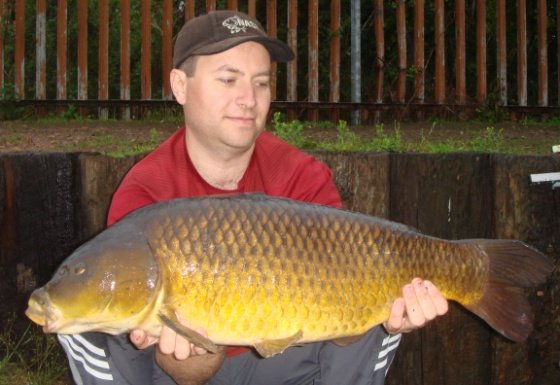How to Find Carp Patrol Areas
What should I do if I can’t find carp patrolling?
If fish are not showing, or you cannot see any visible signs of carp, then you’ll need to make an educated guess as to their whereabouts or likely patrol areas at different times of the day. You’ll need to tap into your knowledge and experience on your chosen water and assume where you think they’re likely to hold up. If you haven’t fished the lake before, then you should try speaking to regular anglers in order to find out any common knowledge about fish patrolling in the lake.
Here are some general guidelines that I have used in the past to assume where carp may be inclined to patrol or hold up in common lakes. These should only be used as a rough guide to finding where the carp locations are without actually seeing them, although, I should stress that these are just a guide and that there’s no substitute for spending time looking for carp and finding their regular feeding areas. Using your eyes and ears will always be more accurate than making general assumptions!
Finding Carp Holding Areas
Quick Tips for Finding Carp Patrol Areas:
- Weed beds and lily pads are always great places to assume carp hold up or patrol, especially in the summer as natural food supplies, like crustaceans, are at higher levels.
- Carp love shelter and security so try fishing close to any visual features in the lake such as overhanging trees, islands or reed bushes. These are often the areas where carp love to patrol regularly.
- Water outlets may be frequented by carp most days. These are a common holding area for carp.
- Aerators or fountains that spray out water are good places to find carp during difficult hot days as these provide oxygen in the vicinity of the water.
- Large sunken items such as fallen tree trunks or even large, heavy rubbish (wheels, shopping trolleys, etc) are great places to find carp without seeing them first.
- The margins of pier-type banks that protrude out into the lake are another good place where carp often patrol daily at various times of the day. These are always good places to target carp.
- Find out if there are any shelves or underwater drop-offs present and which swims they’re in. Carp often patrol different water depths or rapid slopes as this can be where food items hold up.
- Find the areas where their natural food supplies are likely to be high. Therefore, as a general rule you could fish the silt more in the spring and the weed or pads more in the summer months. This is because bloodworms are in good supply in spring, and crustaceans are more abundant during the summer.
- Shallow water is often best on warm days and deeper water when it’s cold or likely to become cold during your session. So you may need to factor in general conditions where trying to find carp.
Carp have been known to use different features as reference points to find their way around certain areas of the lake. This is one reason why they do patrol features on a regular basis, and therefore, a good reason to fish for carp near natural, and even man-made features. In fact, have you ever thought about creating your own feature?
Locating Big Carp in the Spring
Carp Location in the Summertime
Finding Large Carp in the Cold Winter
Location of Most Carp in Autumn
The Case for Quality Carp Bait
Fishing Tactics for Snags & Trees
Boilie Placement on the Hair rig
Different types of carp rigs to use
A Carp's Digestive System in Detail
Ingredients used in Common Carp Baits
Common Baiting Tactics When Fishing
The Various Carp Bait used to Catch Bigger Carp
When to use Pop-ups or Bottom Bait for Carp Fishing
How to complete a Baiting Campaign on Lakes & Ponds
The Basic Carp Fishing Baits Used to Catch Large Carp
Fishing Tactics when Fishing for Carp during Long-stay Sessions
